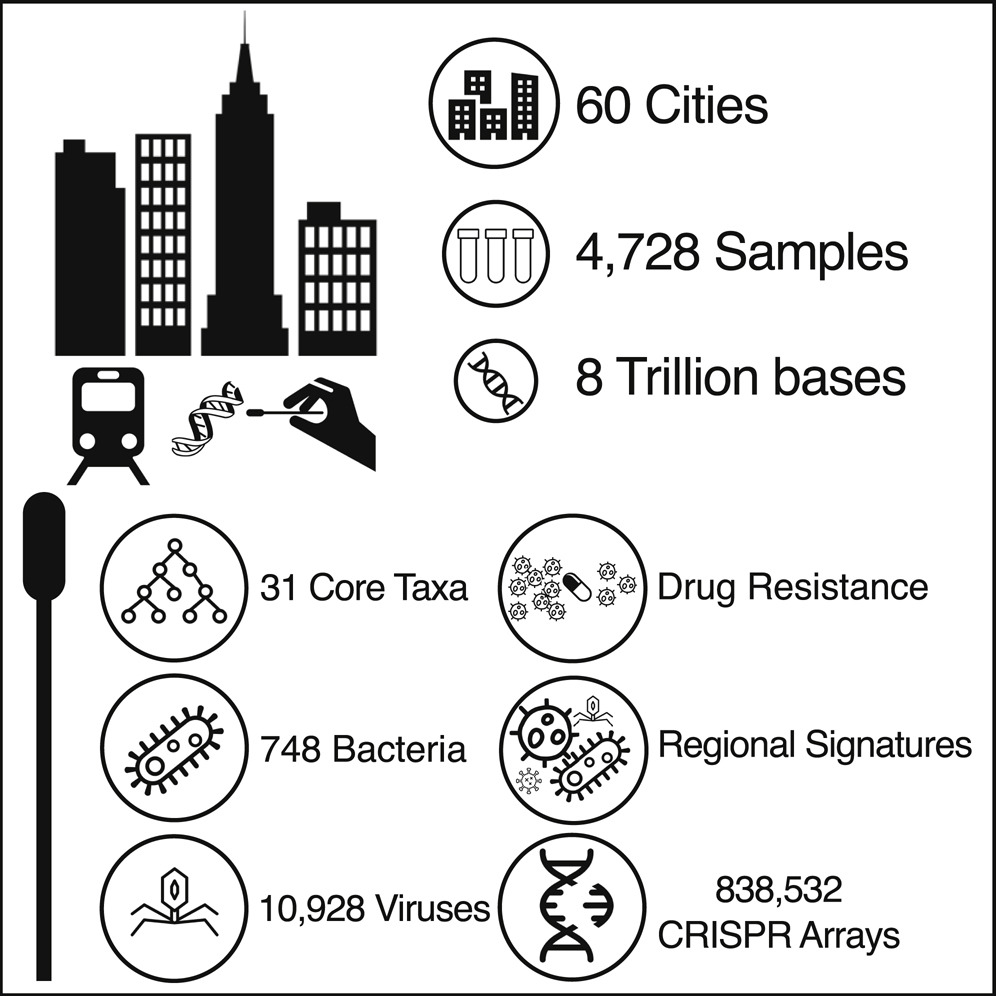Solving one of Viking Age Britain’s greatest mysteries
David Keys considers a discovery that sheds fresh light on gold, silver, sacred relics and fear in the medieval era
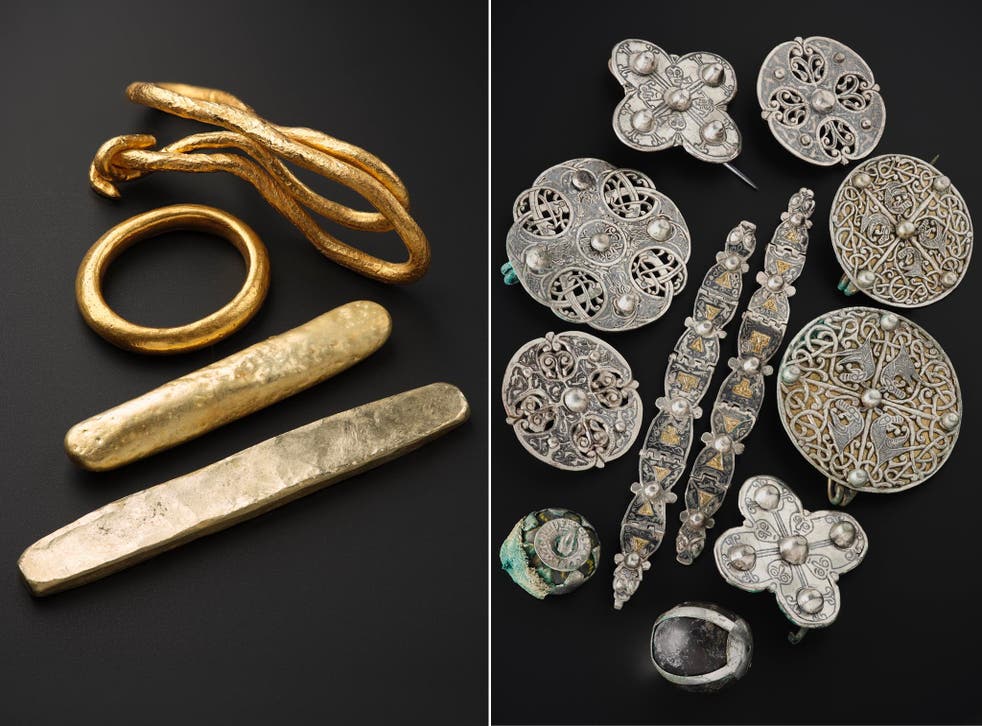
(National Museums Scotland)
Archaeologists have determined that a treasure cache, discovered by metal detectorists in Scotland seven years ago, is the richest and most complex Viking era hoard ever found in Britain.
The finding comes after three and a half years of detailed scientific analysis and sheds unprecedented new light on the geopolitical and religious realities of early medieval times.
Most of the major silver and gold items from the hoard will be on public display for the first time at the National Museum of Scotland from this Saturday.
Originally the treasure, unearthed in the Glenkens area of Galloway, south-west Scotland, was thought to be a Viking hoard, buried by pagan Viking warlords – but the emerging evidence is now beginning to suggest that it was, instead, probably an Anglo-Saxon hoard buried by Christian monks or priests.
Recommended
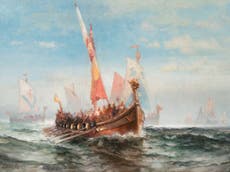
How the Vikings ran the medieval world’s slave trade
The painstaking investigation – using x-rays, CT scans, microscopy and molecular analysis – has revealed that the hoard consists mainly of two very different types of treasure – silver bullion, as well as sacred Christian relics and ritual equipment.
What’s more, the emerging evidence suggests that the treasure - known as the Galloway Hoard - was not only non-Viking, but was probably hidden in around 900 AD, to prevent it from falling into Viking hands.
Partly reflecting the treasure’s division, into secular and religious components, was the way it was buried. The investigation has shown that the hoard had been deliberately buried in two layers, in order to deceive any Vikings (or others) who succeeded in locating it.
The upper layer – a ‘sacrificial’ decoy – mainly consisted of silver bullion (plus a beautiful silver cross). However, the hoard’s owners had deliberately constructed a false bottom to the part of the pit where the upper layer was placed
.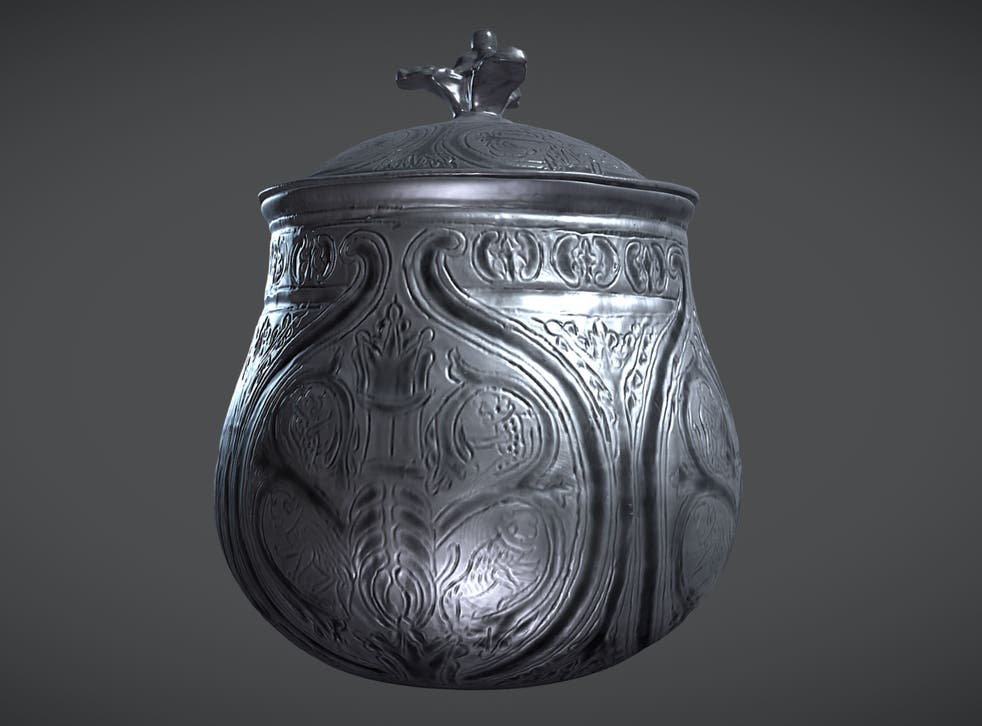
3D digital model of the vessel from the Galloway Hoard
(National Museums Scotland)
For underneath 8cm of ‘natural’ gravel, those original owners had hidden a much bigger layer of treasure – consisting of sacred relics and high prestige religious equipment, as well as more silver bullion.
That lower layer – which the owners clearly considered much more valuable than the upper ‘decoy’ layer - consisted of more than 80 items, which give an unprecedented glimpse into the sort of religious and other treasures that major Anglo-Saxon churches and monasteries would have owned. Normally, elsewhere, such items have not survived – but in this remarkable instance, probably courtesy of a Viking threat, they did.
There are no less than five likely sacred relics, each presumably associated in some way with specific Christian saints and martyrs whose identities are as yet unknown.
These sacred relics include:
Two tiny scoops of earth and dust - containing microscopic fragments of gold, invisible to the naked eye. It’s likely that they were formed by rolling earth in the dust adjacent to an important relic. Rare other examples are from the Vatican in Rome and from an Irish-established abbey at Bobbio, 60 miles south of Milan – and it’s known that at least the Vatican ones were formed and brought back by pilgrims who had visited Bethlehem, the banks of the River Jordan and Jerusalem’s Church of the Holy Sepulchre between the seventh and ninth centuries. Those Vatican ‘earth relics’ were therefore from the places specifically associated with Jesus’ birth, baptism and burial. It is therefore conceivable that the two earth relics in the Galloway Hoard may have similar religiously significant origins.
A 5cm long touchstone (a precious metal assayer’s tool) made of black schist, encased in gold filigree. Clearly the touchstone itself had no great intrinsic value – but the gold surrounding it suggests that it nevertheless probably had great spiritual significance.
There are a number of saints who had been goldsmiths or silversmiths (including the 7th-century French saint, Eligius) – so it is conceivable that the black schist touchstone was associated with one of them.
Likewise, there is a 3cm diameter blue glass potentially Anglo-Saxon bead (again with no great intrinsic value), which is set in a beautifully decorated silver mount. It’s possible that this too was a relic or derived from a reliquary, associated with an as yet unidentified saint.
Finally, in terms of potential relics, the archaeologists have found a small rock crystal sphere set in a cross-shaped silver mount. It’s possible that the crystal ball was either perceived as a relic or as a talisman or as both. Crystal spheres had, since pre-Christian times, been perceived as protective charms.
However, quite apart from these sacred relics and possible relics, the investigation has identified two other likely religious objects – also in the lower ‘high security’ part of the hoard
.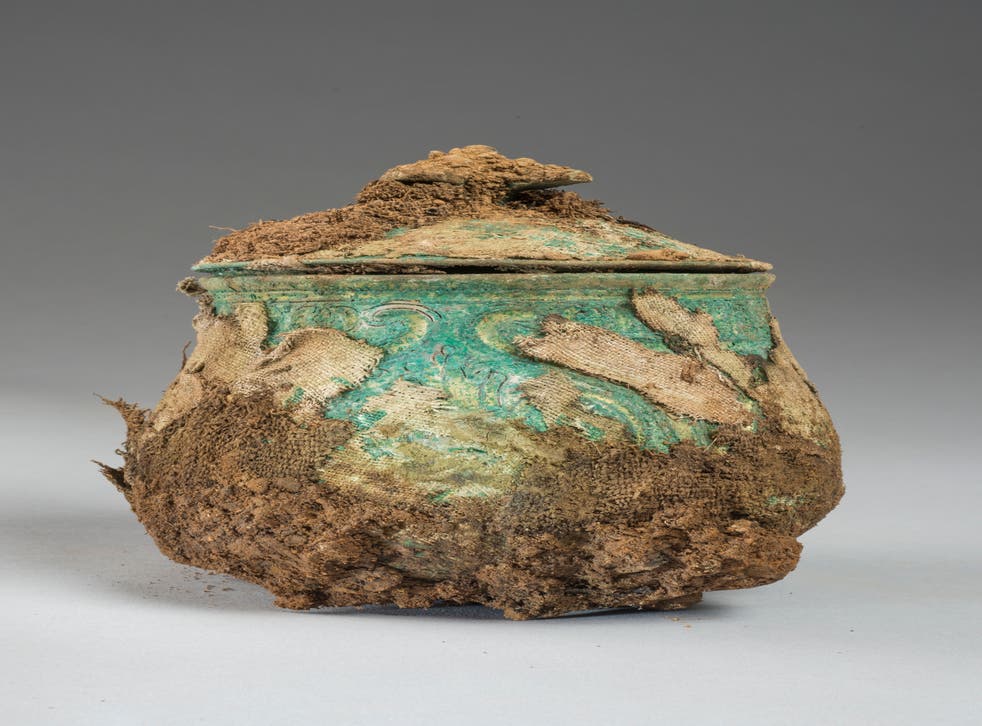
(National Museums Scotland)
The largest is a beautiful highly decorated 14 cm tall lidded container, made of gilded silver. It’s conceivable that it was used to hold sacred oil (used for anointing priests and healing the sick) or holy water – but it’s the origin of the object that makes it unique in Britain. Using 3D x-ray imaging techniques, the archaeologists have succeeded in revealing its iconography – and have concluded that it was almost certainly produced in the Middle East by Persian or Persian-influenced silversmiths in the 6th to 8th century A.D. Decorated with Zoroastrian-style fire altars, winged crowns, leopards and tigers, It’s the first time that anything like it has ever been found in Britain.
The second potentially non-relic-related religious object in the hoard is a spectacular rock crystal jar with a pure gold spout, probably used to dispense holy oil - or to hold water to add to the eucharistic wine. In Christian symbolism, the mixing of water with wine represented and still symbolises the union between humanity (represented by water) and divinity, symbolised by wine. The jar, inside a silk-lined leather pouch, was made from a fragment of a much older object – a rock crystal column. The only known similar pieces of rock crystal are in the Vatican - and the only known context of discovery for these crystal columns is from the second century A.D. Catacomb of Domitilla, an underground burial area used by Roman Christians, almost certainly including a number of early martyrs.
Although most of the hoard’s religious items are in the ‘high security’ lower layer (below the upper layer’s false bottom), that part of the pit also contained 45 pieces of silver bullion (weighing almost three kilos), four silver arm-rings, two gold ingots, a gold finger ring, a gold probable cloak-pin (in the shape of a bird), 3 gold items (shaped like animals) and substantial quantities of textiles including Scotland’s earliest examples of silk
.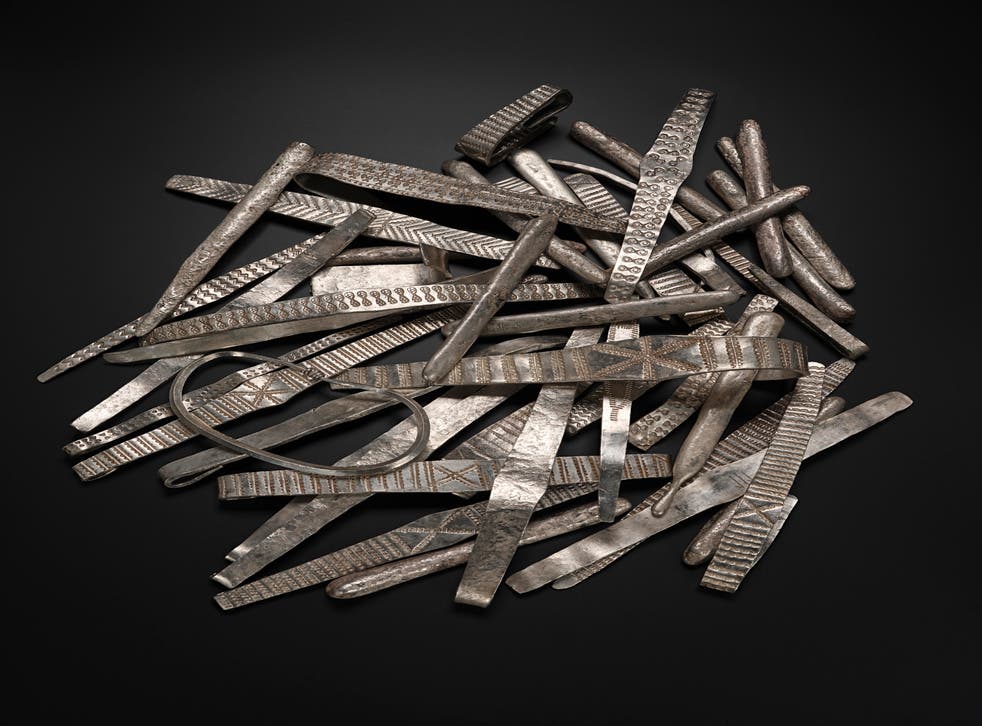
Some of the silver pieces found in the lower layer of the Galloway hoard
(National Museums Scotland)
The decoy upper layer of the hoard (above that layer’s false bottom) contained more than two kilograms of silver bullion – and a magnificent cross which would have almost certainly adorned the chest of a very high-status cleric – probably a bishop or an abbot.
The big question is therefore which bishop or abbot – and where did the treasure therefore originally come from.
There are a number of possibilities – but one of the leading candidates would be the famous monastic and episcopal centre at Whithorn, more than 20 miles to the south-west.
At around the same time that the treasure was buried (i.e. around 900 A.D.), the Vikings appear to have taken control over the Whithorn area. Certainly, a large wooden church, at Whithorn itself, ceased to exist – and new structures were built nearby in a style usually used by Dublin-based Vikings. What’s more, it’s known historically that the Dublin Vikings were driven out of that city by the Irish at around that time – and that they then turned their attention to other areas around the Irish Sea, including what is now south-west Scotland.
Archaeological investigations, in and around where the hoard was discovered, has revealed the existence of a large previously unknown probable ecclesiastical site – potentially a monastery and/or a manor and church belonging to a local bishop.
Medieval bishops used to spend much of their time visiting local churches throughout their episcopal territories – so it is conceivable that a local bishop (perhaps the one from Whithorn) merely happened to be visiting the Glenkens area when a threat from Viking raiders suddenly emerged
.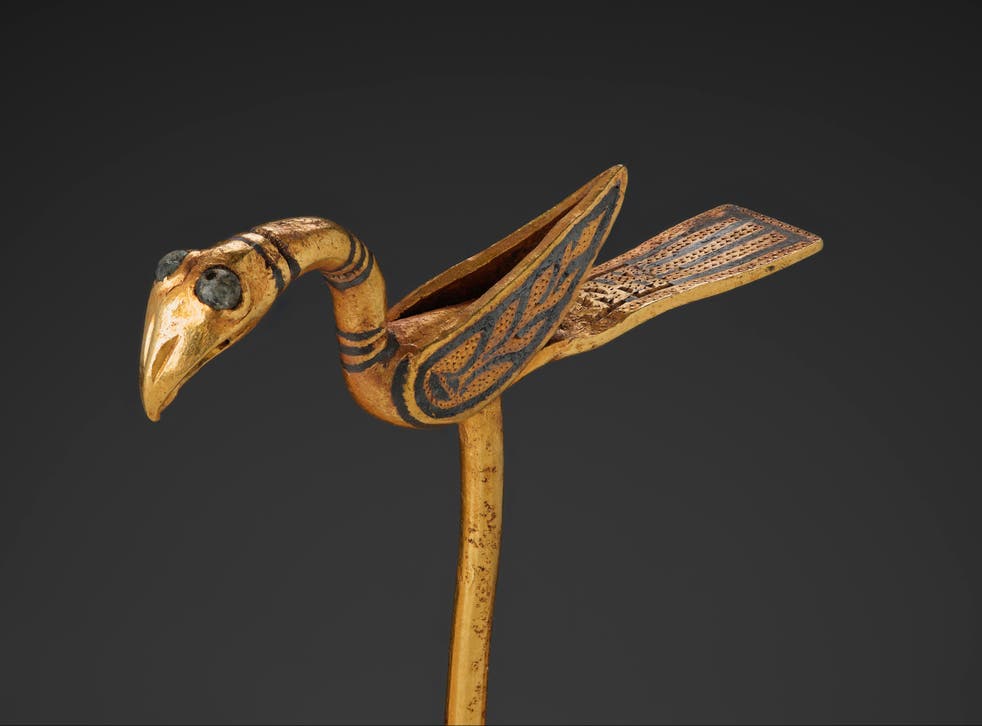
This piece, made of gold and in the shape of a bird, is believed to be a cloak pin
(National Museums Scotland)
Certainly, such bishops would probably have travelled with a substantial retinue of assistants (and with a supply of relics and possibly bullion) – so those valuables would have had to be buried for safekeeping, if a Viking raid was thought to be imminent. Alternatively, a local bishop (again, potentially from Whithorn) could have dispatched his key sacred relics and his institution’s worldly wealth to the Glenkens area for burial and safekeeping for the duration of the looming crisis.
If the newly discovered ecclesiastical complex in that area was indeed a monastery or other major religious centre, then it’s also possible that they (or priests from nearby Kirkcudbright) could have had their own relics and silver bullion that needed hiding in the face of a Viking threat. Only further archaeological investigations will potentially help reveal precisely who buried the treasure – and which ecclesiastical centre they were from.
The only certainty is that the treasure’s owners never returned to retrieve their or their institution’s spiritual and worldly wealth. It’s possible that they were killed by Viking raiders – but it’s also conceivable that they fled to a safer environment and were never able to return to reclaim their treasures. Certainly at around this time, there is a tantalising record of refugees from the Solway Firth area fleeing the Viking threat and arriving in Anglo-Saxon-controlled Durham.
The Galloway hoard provides extraordinary new evidence for the remarkably interconnected nature of the early medieval world.
Although the Glenkens area is now in south-west Scotland, the area was under the control of the Anglo-Saxon kingdom of Northumbria from the mid 7th to at least the late 9th century, but the Galloway area then came under the influence of Vikings from Ireland. But before the Northumbrians and the Vikings arrived on the scene, the area had been Brythonic (Welsh) speaking.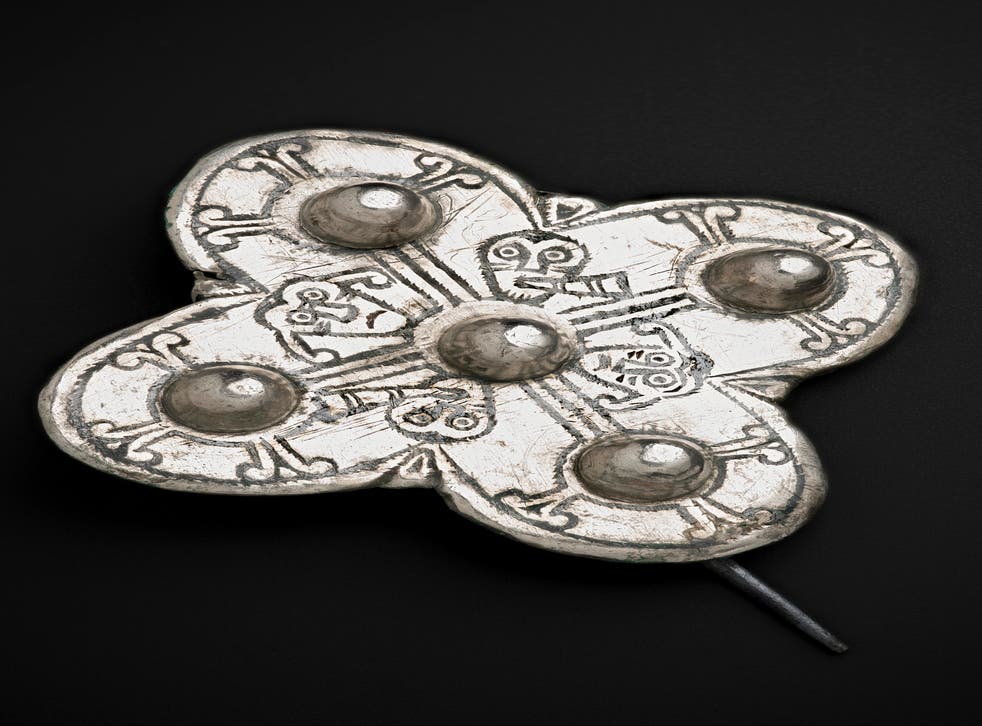
Quatrefoil brooch from the Galloway Hoard
(National Museums Scotland)
The material in the hoard was originally made in a large variety of places.
The gilded silver container probably came from western or central Asia.
The silk almost certainly came from the Eastern Mediterranean or from the Arab world – or possibly even from China.
The rock crystal jar may well have come from Rome - with the crystal itself originating from quartz deposits in the Alps or in Turkey or possibly even in India.
The silver bullion is likely to have been from Viking sources (silver being their preferred currency!) - but may well have been made from melted-down Middle Eastern Islamic coins. The Vikings gained much of their wealth by operating a vast slave trade – and Middle Eastern customers usually paid them in vast quantities of Arab silver coins.
Some of the silver had almost certainly belonged at some stage to wealthy Anglo-Saxons - because several pieces of the hoard’s silver bullion have Anglo-Saxon names inscribed on them in an Anglo-Saxon script known as runes.
The treasure has more gold than any other Viking era hoard ever found in Britain – but precisely where the gold was originally mined is currently not known. However, it is likely to have been endlessly recycled – perhaps initially from Roman gold originally obtained from Spain or West Africa.
The great treasure hoard about to go on display at Edinburgh’s National Museum therefore symbolises the globalised nature of the ancient and medieval worlds.
One of Britain’s leading specialists in early medieval history, Dr Alex Woolf of the University of St Andrews believes that this extraordinary hoard is “a very rare opportunity to catch a moment in the long history of the Viking Age”.
“The location of the hoard and the nature of some of its material strongly suggests that it was buried by members of the Northumbrian Church in the face of a threat, probably from the Vikings,” said Dr Woolf, author of a major book on Viking Age Scotland (from Pictland to Alba).
Gilbert Márkus, a University of Glasgow historian who has carried out extensive early medieval research in Galloway believes that the hoard helps give an insight into “a time of crisis”.
“The painstaking and methodical investigation of the Galloway Hoard is revealing more and more about its origins, and about the extraordinary far-flung connections enjoyed by the communities of Viking Age Britain,” said Mr Marcus, a historian of early medieval Scotland and author of a key book on that era (Conceiving a Nation: Scotland to 900 AD).
“The possibility that the hoard was buried by churchmen to keep it from falling into the hands of their enemies is even more tantalising, offering a real insight into the life of a community in a time of crisis,” he said.
Dr Martin Goldberg, curator of the National Museum of Scotland’s Galloway Hoard exhibition says the treasure is “a fascinating find“.
“This exhibition offers a rare ‘snapshot’, the chance to see real archaeological work in progress, both what we have learned so far and the work still to be done,” he said.
The exhibition, which is supported by the UK-based global investment company, Baillie Gifford, opens at the National Museum of Scotland in Edinburgh on 29 May 2021 and will run until 12 September. It will then transfer to Kirkcudbright Galleries in Kirkcudbright, Galloway (9 Oct 2021 to10 July 2022) and then Aberdeen Art Gallery (30 July to 23 October 2022).
More about VikingsScotland















